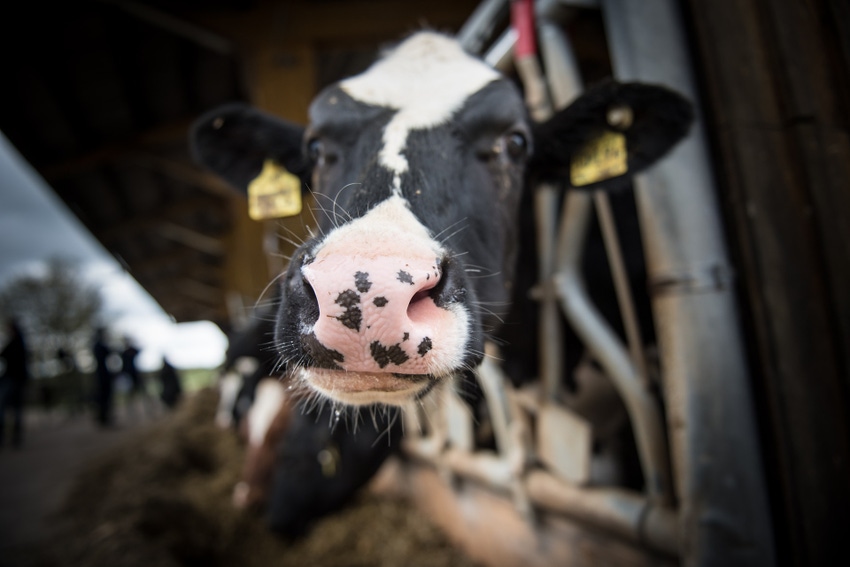Expert perspectives on chewing behavior in dairy cows
Effects of forage characteristics and feed-bunk management on cow health and productivity explained.
June 5, 2023

A new perspective and commentary in Applied Animal Science examines existing research on how fiber content and particle size of feed affect eating, rumination, and productive response in dairy cows. Previous studies have found that recumbent rumination is most effective because it promotes greater saliva secretion and is beneficial to the cow's overall health. In addition, research has found that longer recumbent ruminating time is linked to greater fat and protein content in milk. This article offers recommendations for forage chop length to balance eating and recumbent rumination time to optimize energy intake, health, and productivity of cows.
"In the dairy cow's ideal environment, 80% or more of daily rumination should occur while lying down," said lead author R. J. Grant, PhD, from the William H. Miner Agricultural Research Institute. "Recumbent rumination results in healthier rumen pH, greater DMI, and milk with greater milk fat and protein content."
Research has found that cows often chew feed to a relatively common particle size before swallowing, even if the total mixed ration (TMR) contains a wide range of particle sizes. Larger particles require more chewing, but that does not necessarily result in longer rumination times. "Dairy managers, nutritionists, and crop personnel all must consider the time it takes for a cow to ingest the forage in her TMR and understand that eating, resting, and ruminating behaviors are biologically linked, and our nutritional and management systems must not unlink them," said Grant. "Forage fiber needs to be optimized within the TMR for efficient consumption, and then cow comfort must be optimized for the dairy cow to effectively process the swallowed feed via recumbent rumination."
David Beede, PhD, editor in chief of Applied Animal Science, commented: “This article gives well-founded perspectives and commentary about factors influencing chewing behavior of dairy cattle. Written by two noted and long-time researchers and practitioners, the article provides practical recommendations to integrate concepts and knowledge about forage maturity, fiber degradability, particle size, fragility, and moisture content."
Beede also noted that forage-fiber characteristics interact with feed bunk management to affect proper balance to optimize eating time, rumination, and resting activity. “Recommendations (e.g., for theoretical length of cut and ration particle size distribution) emerge from these concepts to optimize lactational performance."
The authors proposed that using the recommendations for forage chop length and TMR particle distributions will allow cows to extract the greatest nutritional value from their forages.
"Time spent eating at the feed bunk can be considered an integral component of forage quality," said Grant. "Lower quality forage is less fermentable and takes longer to eat. Both have the potential to reduce energy intake, health, and productivity."
Based on the reviewed research, the authors recommended that the length of cut for forages should be adjusted based on fiber degradability, fragility, and moisture content for crops such as corn silage. Grant explained, "as forages become more mature, lower in degradability, and less fragile, they should be chopped shorter to ensure optimal eating and ruminating responses. Similarly, immature or more fragile forages should be chopped longer."
The article appears in the June issue of Applied Animal Science.
You May Also Like



